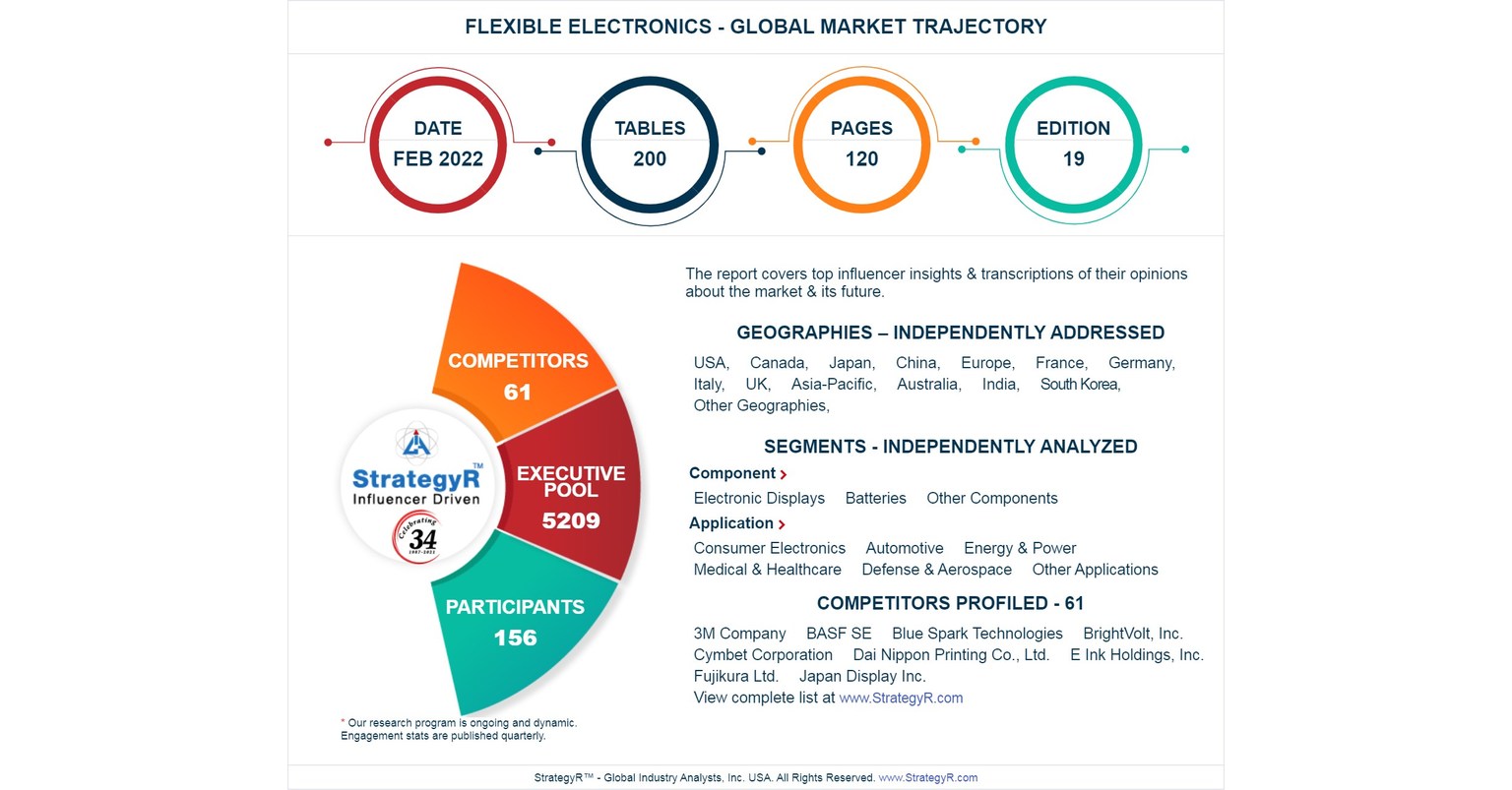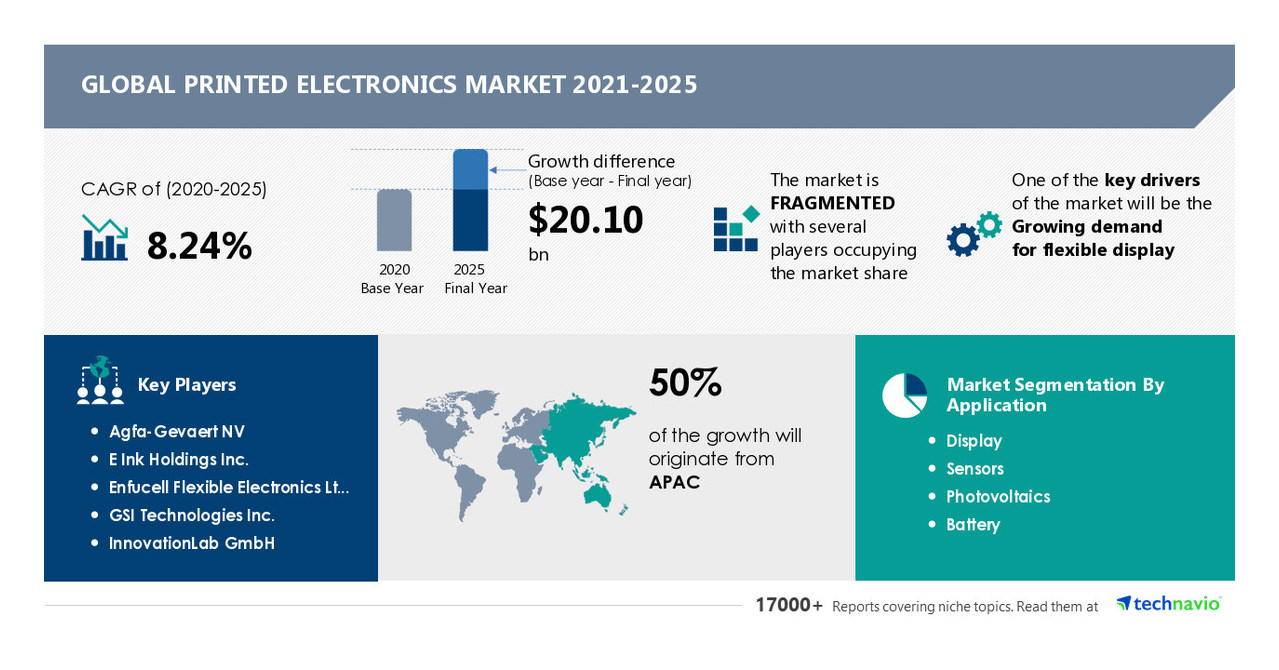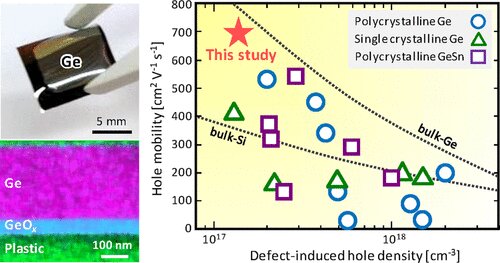DUBLIN, April 22, 2022 /PRNewswire/ — The “Flexible Electronics: Global Markets” report has been added to ResearchAndMarkets.com’s offering.

The report provides an overview of the global market for flexible electronics and analyzes market trends. Using 2020 as the base year, the report provides estimated market data for the forecast period 2021 through 2026.
Revenue forecasts for this period are segmented based on solution type, industry, and region. The report also focuses on the major driving trends and challenges that affect the market. The report explains the current trends in the flexible electronics market. The report concludes with detailed profiles of the major players in the global flexible electronics market.
Report Includes:
-
37 data tables and 49 additional tables
-
An overview of the global market for flexible electronics within the industry
-
Analyses of the global market trends, with data from 2020 to 2021, estimates for 2022 and projections of compound annual growth rates (CAGRs) through 2026
-
Evaluation and forecast the overall flexible electronics market size, forecasted growth trends and corresponding market share analysis by technology, application, end-user industry and region
-
Understanding of concepts related to implications of flexibility, dynamic interferometry and fabrication technologies
-
In-depth information (facts and figures) concerning market drivers, market deterrents and other demographic and economic factors that will drive future demand for this market
-
Review of recent industry trends, value chain analysis, competitive landscape and COVID-19 implications within the consumer electronics marketplace
-
Company profiles of the major global players, including AU Optronics, E Ink, Konica Minolta, Panasonic and Tekscan
Key Topics Covered:
Chapter 1 Introduction
Chapter 2 Summary and Highlights
Chapter 3 Market and Technology Background
-
Technology Overview
-
Evolution of Flexible Electronics
-
Types of Material
-
Substrate
-
Electrode Material
-
Functional Materials
-
Market Drivers
-
Economical Cost of Substrate and Cost-Benefit Advantage of Flexible Electronic Devices
-
Huge Development in Terms of Smart Home and Industry 4.0
-
Market Restraint
-
Complicated Design and Assembly Process
-
Impact of COVID-19 on Flexible Electronics Market
Chapter 4 Market Breakdown by Solution Type
-
Hardware
-
Displays
-
Sensors
-
Batteries
-
Circuit Boards
-
Lighting
-
Others
-
Software and Services
Chapter 5 Market Breakdown by Industry
-
Consumer Electronics
-
Healthcare
-
Diabetes Care
-
Elder Population
-
Testing and Monitoring
-
Quality of Life
-
Medical Electronics
-
Automotive
-
Aerospace and Defense
-
Energy and Power
-
Others
Chapter 6 Market Breakdown by Region
-
North America
-
United States
-
Canada
-
Europe
-
United Kingdom
-
Germany
-
France
-
Italy
-
Rest of Europe
-
Asia-Pacific
-
China
-
Japan
-
India
-
Rest of Asia-Pacific
-
South America
-
Middle East and Africa
Chapter 7 Competitive Landscape
Chapter 8 Company Profiles
For more information about this report visit https://www.researchandmarkets.com/r/thdzdc
Media Contact:
Research and Markets
Laura Wood, Senior Manager
[email protected]
For E.S.T Office Hours Call +1-917-300-0470
For U.S./CAN Toll Free Call +1-800-526-8630
For GMT Office Hours Call +353-1-416-8900
U.S. Fax: 646-607-1907
Fax (outside U.S.): +353-1-481-1716

View original content:https://www.prnewswire.com/news-releases/global-flexible-electronics-markets-report-2022-2026—huge-developments-in-terms-of-smart-home-and-industry-4-0–301530856.html
SOURCE Research and Markets








